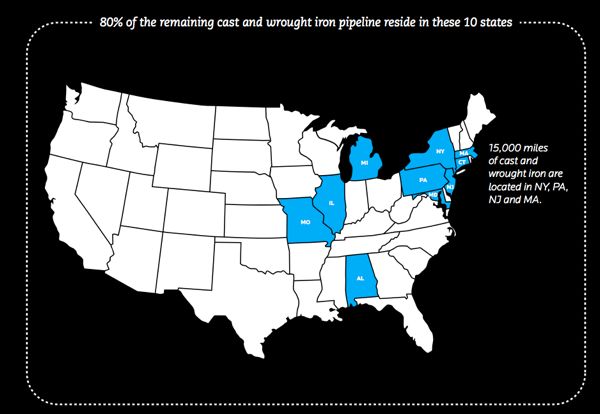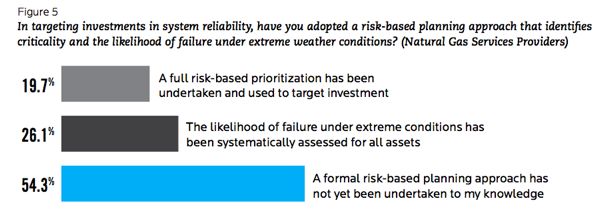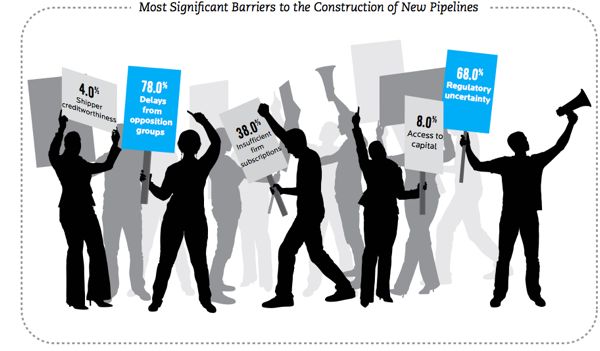“I spent the last 5 years dismanting the overreach that she [NJ DEP Commissioner Lisa Jackson] did in New Jersey and our environmental protection area. ~~~~ Gov. Chris Christie, Iowa, 3/7/15
[Update 10/25/15 – We are pleased that EPA held the line – but we are disgusted that DEP’s Ray Cantor was caught in a flat out lie in his testimony to the Senate Environment Committee.
NJ Spotlight wrote this:
At the hearing earlier this week, Raymond Cantor, chief advisor to the commissioner, said after meeting with DEP on the proposal, the state had essentially resolved those concerns.
But a letter from the Region II EPA office yesterday suggested otherwise. “The proposed regulations have not changed,’’ wrote Joan Leary Matthews, director of the Clean Water Division. “EPA continues to have concerns as identified in our previous letter.’’
But the EPA issue was not the only lie Cantor told the Committee – he also stated that no standards had been weekend, and that was a big lie.
He also stated that the Gov.’s Office provided no direction to the DEP on the proposal; that the proposal was generated by DEP staff and based on Stakeholder input; and that the Staekholder process was open and robust – all 3 of those claims are lies too. ~~~ end update]
During Monday’s testimony on SCR 180, the Legislature’s Resolution to veto the Christie DEP’s major “overhaul” of the flood hazard, storm water management, and coastal zone rules, DEP Deputy Commissioner Ray Cantor claimed that EPA had backed away from their prior opposition to the proposal.
Cantor claimed that it was all a misunderstanding because “someone” has sent the EPA Regional Administrator a “misleading” email and since then, DEP had explained the situation to EPA staff. NJ Spotlight:
Cantor said the EPA, after meeting with state officials, had essentially resolved those concerns, citing a story in the “Inside EPA,” newsletter quoting an agency official saying the EPA had “lesser concerns’’ following talking with the DEP.
Because I was the “someone” that sent that EPA email that Cantor referred to, I felt obligated to set the record straight and put the issue in the record on SCR 180.
Here is what EPA warned NJ DEP: (emphasis mine)
While EPA appreciates the importance of increasing consistency among regulatory requirements, measurable changes to Category 1 (Cl) waters as a result of proposed changes to these rules would not comply with New Jersey’s water quality standards. Cl waters have exceptional ecological significance, exceptional recreational significance, exceptional water supply significance or exceptional fisheries resources. Changes to these regulations that result in a less stringent condition in New Jersey’s Pollutant Discharge Elimination System (NJPDES) permit(s), will also be inconsistent with EPA’s National Pollutant Discharge Elimination System (NPDES) permitting regulations.
Today, in followup letters to EPA and Chairman Smith (see below), I again laid out the regulatory basis for EPA oversight and how the DEP proposed repeal of the SWRPA buffer regulatory provisions and replacement by “riparian zone” rules would weaken protections for Category One waters and trigger federal oversight.
I urged that EPA expand the basis for the concerns expressed in their comment letter to DEP and refer the matter to Regional Counsel and EPA water quality program staff in the Surface Water Quality Standards, TMDL, NPDES, and Municipal Stormwater (MS4) permitting programs. The SWQS program in particular has an interest in assuring no backsliding in NJ SWQS regulations and a legally big oversight stick.
EPA has enormous legal oversight power in federal Clean Water Act delegated and funded programs, including the ability to withhold federal funds or even assume direct federal implementation of Clean Water Act programs in NJ.
It is vital that these issues are decided openly and transparently by EPA lawyers and professional staff on the merits and not subject to behind the scenes political pressure from NJ DEP or Gov.’s Office officials. That is why I am writing to keep these issues in the public domain.
It is also very important politically that EPA hold the line and not withdraw their prior concerns, as the EPA’s opposition and possibility of losing federal funds can provide cover for some Legislators reluctant to take on not only Governor Christie’s Office, but also the Chamber of Commerce, NJBIA, Builders Association, and labor unions being organized in support of the Christie rollbacks.
Dear Chairman Smith:
The below letter to EPA Regional Administrator Enck is provided for your information.
As I testified on SCR 180, the DEP’s proposed revocation of the SWRPA C1 buffer language in the storm water management rules at NJAC 7:8-5.5(h) would impact other regulations because that provision is explicitly linked to other DEP regulations.
Specifically, the SWRPA is linked to and implements the federal EPA approved anti-degredation policy in the Surface Water Quality Standards (NJAC 7:9B-1 et seq).
The SWRPA provision also is linked to and implements the federal EPA mandated Municipal Stormwater Permit Program (MS4) regulations at NJAC 7:14A-25.6, which requires that NJPDS MS4 permits “shall require compliance with the applicable design and performance standards established under N.J.A.C. 7:8 for major development as defined in N.J.A.C. 7:8-1″
Those are direct federal hooks to federally mandated and delegated programs for which EPA has State oversight responsibility under the Clean Water Act.
There are additional federal hooks, but they are programmatic and technical, not regulatory, e.g. NJ DEP’s EPA approved TMDL’s include “load allocations” from non-point sources that consider pollutant removal from vegetated buffers and SWRPA BMPs.
Additionally, as a State adopted non-point source BMP, various EPA Surface Water Quality Standards and TMDL Guidance documents strongly suggest that a State adopted non-point source BMP become federally enforceable. I’d be glad to provide text and details on this, but it is beyond the scope here.
Because DEP Deputy Commissioner Cantor testified that I had sent a “misleading email to EPA” regarding these matters, I ask that this entire correspondence be entered into the record on SCR 180.
Although it is not a federal issue, the SWRPA regulatory provision is linked to and impact municipal storm water ordinances, including requirements to adopt stream buffer ordinances that comply with the SWRPA provisions. I urge you to consider the testimony from ANJEC in that regard.
Finally, the NJ Appellate division rendered an opinion in ” IN THE MATTER OF NJDEP ADMINISTRATIVE ORDER NO. 2007-01 and ADMINISTRATIVE ORDER NO. 2008-02. (2009), see
http://www.leagle.com/decision/In%20NJCO%2020090806243/IN%20THE%20MATTER%20OF%20NJDEP%20ADMINISTRATIVE%20ORDER%20NO.%202007-01
That decision goes into some detail on the SWRRPA provisions and validates my testimony regarding the significant change in regulatory standards that would result from repeal of the DEP’s proposed repeal of the SWRPA provision.
I am available to clarify and expand on this at your convenience.
Respectfully,
From: “Bill” <bill_wolfe@comcast.net>
To: “Judith Enck” <Enck.Judith@epa.gov>
Sent: Tuesday, October 20, 2015 5:14:36 AM
Subject: EPA letter to NJ on storm water rules
Dear Regional Administrator Enck:
Yesterday, the NJ Senate Environment Committee heard a Resolution, SCR 180, that would initiate the process for a legislatively veto of DEP’s proposed revisions to the NJ Flood Hazard, Stormwater Management and Coastal Zone regulations proposed in the June 1, 2015 NJ Register., see:
During testimony, DEP Deputy Commissioner Ray Cantor stated that DEP officials had multiple conversations with EPA officials and resolved a misunderstanding. Cantor stated that EPA had withdrawn their prior concerns stated in EPA R2’s July 30, 2015 comment letter on the DEP proposal, see:
http://assets.njspotlight.com/assets/15/0831/1743
Mr. Cantor cited a quote to that effect from an unnamed Region 2 official that was quoted in a recent “Inside EPA” story.
FYI, the Chairman rejected that source and urged Mr. Cantor to provide a letter from EPA withdrawing their prior concerns.
I urge you to reject any request to withdraw EPA concerns if made by NJ DEP officials and to stand by and even expand the basis for the prior concerns expressed in the July 30, 2015 comment letter.
As you know, NJ relied on the 300 foot buffers codified in the State storm water rules (@ NJAC 7:8-5.5(h) and known as a “SWRPA” as federally approved “anti – degradation implementation procedures” to protect federally approved State designated Category One (C1) Waters from an “measurable change in existing water quality” (see NJAC 7:9B – 1.5).
C1 waters are codified in New Jersey’s EPA approved State Water Quality Standards (NJAC 7:9B- 1 et seq.)
The NJ State storm water regulations at NJAC 7:8-5.5(h) are linked to State antidegredation designations and anti-degradation policy in State SWQS NJAC 7:9B-1.5 for “Category One” water.
Thus, a revision to NJAC 7:8-5.5(h) constitutes an indirect revision to State SWQS at NJAC 7:9B.
The NJ DEP proposed a repeal of NJAC 7:8-5.5(h) and replacement with a far weaker regulatory regime under State Flood Hazard Act known as a “riparian zone” NJAC 7:13.
The Clean Water Act requires that any revisions to State SWQS standards require EPA approval.
There is an additional federal oversight hook because the NJ DEP SWRPA provisions of the State storm water management rules are linked to the EPA approved Municipal Stormwater Permit Program.
NJ DEP MS4 regulations require that MS4 permittees meet the water quality BMPs and design and performance standards in the storm water management rules NJAC 7:8.
Specifically, NJ DEP MS4 permit regulations provide at NJAC 7:14A-25.6 Content of NJPDES permits for small MS4s provides:
b) The Statewide Basic Requirements (SBRs) are as follows:
ii. The program under (b)3i above shall require compliance with the applicable design and performance standards established under N.J.A.C. 7:8 for major development as defined in N.J.A.C. 7:8-1, unless:(1) Those standards do not apply because of a variance or exemption under N.J.A.C. 7:8; or(2) Alternative standards are applicable under a water quality management plan adopted in accordance with N.J.A.C. 7:15. […]2) Adopt and reexamine a municipal stormwater management plan in accordance with N.J.A.C. 7:8; (3) Adopt and implement a municipal stormwater control ordinance or ordinances in accordance with N.J.A.C. 7:8. The ordinance(s) shall control stormwater from non-residential development and redevelopment projects. http://www.state.nj.us/dep/dwq/7_14a/sub25rule.pdf
The NJ DEP’s June 1, 2015 regulatory proposal would repeal the SWRPA waters and regulatory text @ NJAC 7:8-5.5(h) (see below) and replace the SWRPA buffers with “riparian zones” regulated under the “stream encroachment” regulations adopted pursuant to the Nj Flood Hazard Act.
The “riparian zone” has far less protections than the C1 “SWRPA” – DEP’s proposal acknowledges this regulatory fact:
Therefore, while N.J.A.C. 7:8-5.5(h) prevents certain types of new development from occurring within SWRPAs, the FHACA Rules recognize that development within riparian zones is sometimes unavoidable, and therefore establishes requirements necessary to ensure that disturbance to riparian zone vegetation is avoided where feasible, minimized to the extent practicable, and, where disturbance to riparian zone vegetation would adversely impact the environment, appropriate compensation is provided in order to ensure the continued preservation and/or improvement of riparian zone functionality. (p. 59 60)http://www.nj.gov/dep/rules/proposals/20150601a.pdf
I urge EPA lawyers and water program officials to conduct a detailed comparison between NJ DEP “SWRPA” buffer requirements codified at NJAC 7:8-5.5(h) with the DEP’s “riparian zone” requirements in the DEP’s June 1, 2015 proposal.
The proposed repeal of C1 SWRPA buffers and replacement with “riparian zones” reduces protections which allow more disturbance and development in the buffers. This would violate the State antidegration policy for C1 waters that protects “existing water quality” from any “measurable or calculable change”.
FYI, I’ve conducted a cursory comparison in this document, which includes the full regulatory text of SWRPA @ NJAC 7:8-5.5(h)::
Why A Category One Stream Buffer Has Far More Protections Than A Riparian Zone
Respectfully, Bill Wolfe



